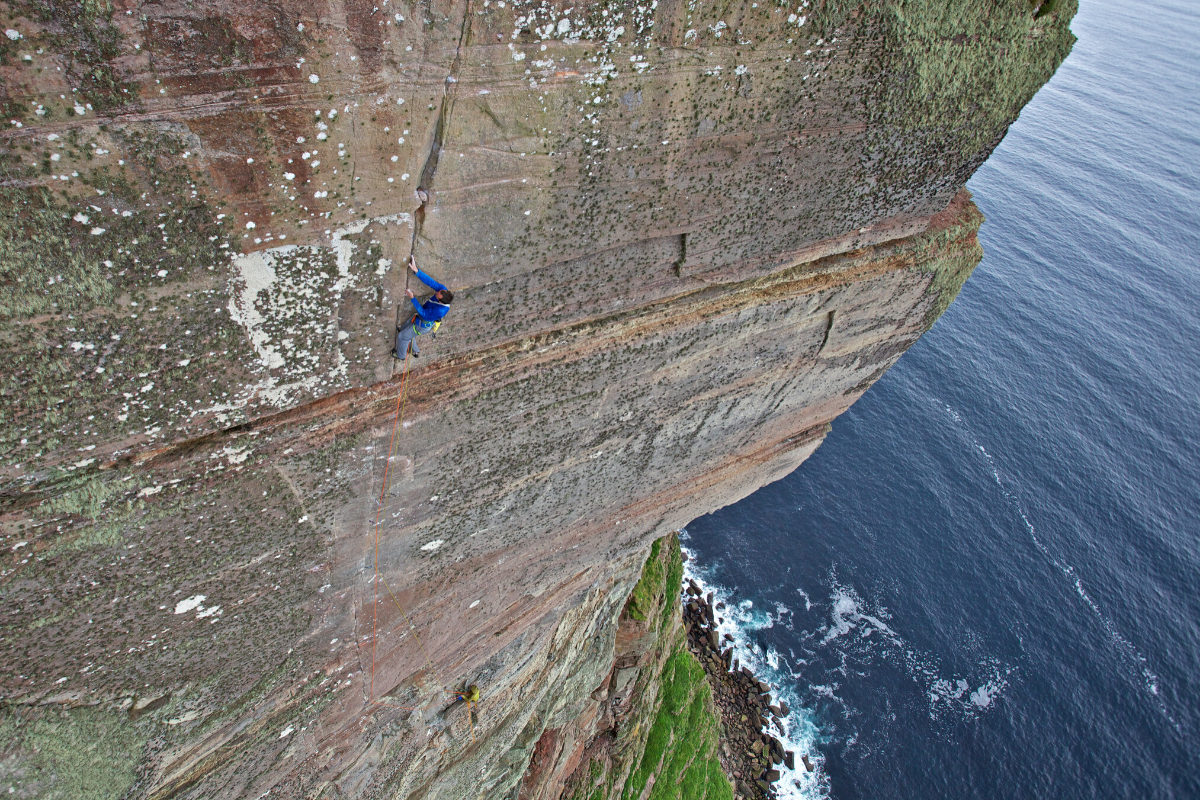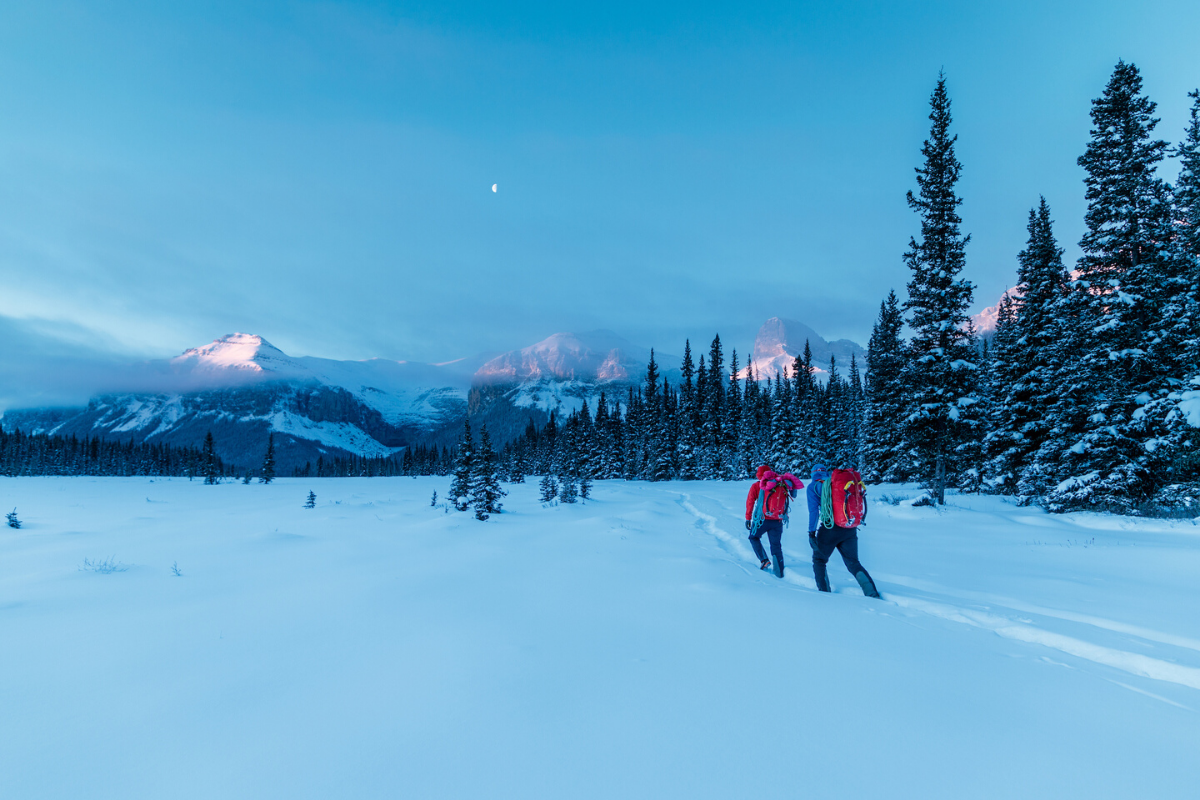Shooting in Inhospitable Environments Q and A | Lukasz Larsson Warzecha
- Kit Lists and Guides

On 25th June, Lukasz joined us for a live talk on what it takes to create his work, the many adventures he has been on, and how he got started. We had so many great questions, we didn't have time to answer them all on the night. Here Lukasz takes us through some of the questions we couldn't get to, and expands on some of his answers from the night.
Are your athletes expected to repeat hard moves or repeat a section of a route for you to get the shot you are looking for and do you have pre-conceived ideas before an assignment?
While shooting with Canon 1DX MkII allows me to capture 14fps and therefore not to ask anyone to do things over and over again, the answer is yes, and no at the same time. Let me explain since it's a little nuanced.
I like to do my research and have a conversation with anyone who has local knowledge about positions and angles. I will also try to find out what other photographers have shot before, so I do not copy someone else's work. Since I believe that photography/filmmaking is a team effort, I also include the athletes into this conversation to see what they think would look cool.
Regarding repeating hard moves...
It depends on the type of assignment. When I'm documenting something or going 'run and gun' style, then the answer is no. I do not interfere with athletic performance.
 Dave MacLeod on Long Hope
Dave MacLeod on Long Hope
But when shooting something commercially there might be a little bit more direction from the client's brief or myself. Sometimes, especially when shooting self-assignments, I will have a very particular idea, and then I will direct everything to my creative vision.
To give you a rock climbing analogy:
- Onsight = documentary style, fast and light, little interference;
- Flash = almost documentary, hopefully fast and light, little interference;
- RedPoint = commercial work, even with a small footprint production all activity will have to be adapted for the camera.
I executed the Canada shoot in Flash. I was going for the full OS on the Longhope shoot with Dave Macleod, but we Flashed parts of the shoot because we had the time and resources. The Cuillin Ridge was full RP, Uisdean was running back and forth so that we can get as much content volume from the situation as possible.
How do you manage to be always at the right place when, for example, the athlete runs over an 11km long ridge? I guess the athlete is faster than you. Do you repeat some core scenes?
Specifically, on the Cuillin Ridge, we discussed that the general area of the Inn Pin would give us the most spectacular coverage. Uisdean knows the ridge like the back of his hand, so I relied heavily on his suggestions and advice. Even without chasing him on the entire ridgeline, to get to the Inn Pin alone is almost 1000 vertical meters of ascent carrying a drone, two cameras and some lenses. Therefore for this occasion, I had a friend Sally Lisle helping out. It was a big day, nonetheless for all of us.
 Uisdean Hawthorn during his Cuillin Ridge Winter Traverse Record attempt
Uisdean Hawthorn during his Cuillin Ridge Winter Traverse Record attempt
In more general terms... How do I find the best place to shoot?
Being in the right place comes from the experience of being in the field and looking through the viewfinder. There's no substitute for field practice here. Early in your career, you might find that the images on the back of your camera are not quite what you were hoping for when pressing the shutter button. That's when your creative vision is greater than your technical skills. With time and practice, you will begin to bridge this gap by learning what works for your style of photography.
When you are looking for good composition to stop and shoot while climbing, are you looking for one that works both in video and still? Or are you looking for different things from a still or video?
There's a significant distinction between shooting stills and filming. As a photographer, your focus is on telling the story with a single image. That shard of time and light, when captured well, becomes a frame that stirs emotion and creates a memory.
Filming, on the other hand, especially when you are trying to tell a story, is about sequences. For every moment, to be able to create a sequence when editing later, I will need at least three shots - a wide, a mid-shot and a close-up.
Therefore when climbing, for a still image, we can get away with a single photograph, the peak of the action shot perhaps with mountains in the background. For a video sequence though, you might want to shoot a wide landscape without the climber at all, then a mid-shot with the climber, and perhaps a close up of their feet, ice axes or ice screw placements.
When tasked with shooting both, it's a constant balance and quite frankly a compromise between the two. In these circumstances, I will stop more often when I can get both at the same time and then I will get some 'pickups', which are shots that I need for a video sequence to work.
 Raphaela Haug on 'Hydrophobia' IV, WI5+, 500ft in North Ghost, Alberta, Canada
Raphaela Haug on 'Hydrophobia' IV, WI5+, 500ft in North Ghost, Alberta, Canada
I love shooting in cold climates; however, I do have a problem with the camera and lens fogging up in cold conditions. I've tried keeping the camera in a thermal jacket, and this doesn't work. Do I need to leave time for the camera to acclimate before shooting?
It's crucial to keep the camera at a constant temperature. Either cold or warm, likewise for the lenses. The fogging up caused by condensation will usually occur when moving lenses or cameras from cold to the warmer temperatures.
It's also essential to keep the front element of your lens dry, any moisture that collects on it has a high likelihood of freezing over. In winter, for those days when I'm shooting outdoors in the cold, but I know that at the end of the day I will be shooting indoors (inside a hut for example), I will keep one lens dry and warm for the indoor use. A neoprene sleeve is a great way to protect your lens for this purpose.
 Raphaela Haug and Uisdean Hawthorn approach 'Hydrophobia' IV, WI5+, 500ft in North Ghost, Alberta, Canada
Raphaela Haug and Uisdean Hawthorn approach 'Hydrophobia' IV, WI5+, 500ft in North Ghost, Alberta, Canada
What kind of training do you do to prepare for the various shoots?
First thing first, when you're away on assignments or trips, you will usually lose fitness. Therefore I try to stay on top of it. The first rule of being fit is never to get unfit. In winter, I put a lot of hours into cross country skiing- there's just no other cardio activity as demanding. It's also a lot easier on your body than running.
On top of that, for the last two years, I followed a training program for an Ironman. I have completed a full IM race in 2019, and I had one planned for this year. With everything else going on in my life (travel, business, etc.) I found that unless I have a goal, it's too easy to procrastinate. I also climb, ski and scuba dive whenever I can.
I will admit that this year my motivation since March has been coming and going.
How many camera bodies do you usually take? Just 2? How many lenses do you need?
In an alpine environment, I will only take one camera body with me and perhaps two lenses. You balance the risk of losing a camera against the ability to be able to move fast(er). I know that in all conditions I can fully trust Canon's 1DX, it's a workhorse, but it's the most cumbersome camera on the market!
That said, I will always bring backups with me, so in my hotel room, I will have at least another camera and a full set of lenses. On almost every commercial shoot, I will bring with me - 20mm f/2.8, 35mm f/1.4, 50mm f/1.4, 85mm f/1.4, 24-105mm f/4, 17-40mm f/4 (I prefer this one over the f/2.8 version 16-35mm, I think it distorts less), 70-200mm f/2.8.
What bags/cases/accessories do you use to keep the camera accessible? In particular, when you're climbing/jumaring.
Personally, I use Lowepro's Toploader AW75 II. I have two of them, and if I need/want I can take two camera's with me and a full non-photography backpack if required.
 Lukasz Behind the Scenes
Lukasz Behind the Scenes
I'm 16 and looking to get started in production and cinematography. How did you get started?
In the TV broadcast world, it is quite often a catch 22. You can't get TV work because you don't have TV credits, you don't have TV credits because you cannot get a job. However, over the last decade, there's been a massive shift towards the democratisation of photography.
There are limitless numbers of entry points to any given industry these days. The well-defined career paths that people followed years back are pretty much gone. The days when as a photographer, you shot for a small newspaper and then maybe for a magazine to get some commercial work have disappeared.
As Pixar's, Randy Nelson once put it, create 'Proof of a Portfolio Vs. The promise of a Resume'. These are powerful words.
Lukasz, how did you make it onto the Mountain Equipment Pro team, and what advice would you give to adventure photographers looking to work with similar brands such as ME?
Sometime in late 2010/early 2011, I had an opportunity to shoot with Andy Turner and Dave Macleod. Those were the early days of my photography career. Building a photography career, or any business for that matter is about building relationships. It's all about who you know, in the right meaning of the phrase.
The relationship with Mountain Equipment is very special to me personally, and the brand's core values and long history resonates deeply with me.
How do you manage to balance home life, with being away 250 days a year?
That's a personal question and a difficult one to give a straight answer. Sometimes I feel as much at home on the road as I do at home. And most times when I'm at home, I can't think of anything worse than the 'pressure' of packing and going somewhere. Philosophically speaking, balance in life is a matter of perspective, and since I'm away so much, I will have to balance it out sometime in the future. When you are away so much, especially in far away, remote places, you realise that you're entirely unable to provide any help to things happening back home. Real-life occurs back home.
Also, I genuinely believe that I'm (or was, the future will tell!) incredibly privileged to be able to travel so extensively, and I'm incredibly grateful for all the opportunities.






